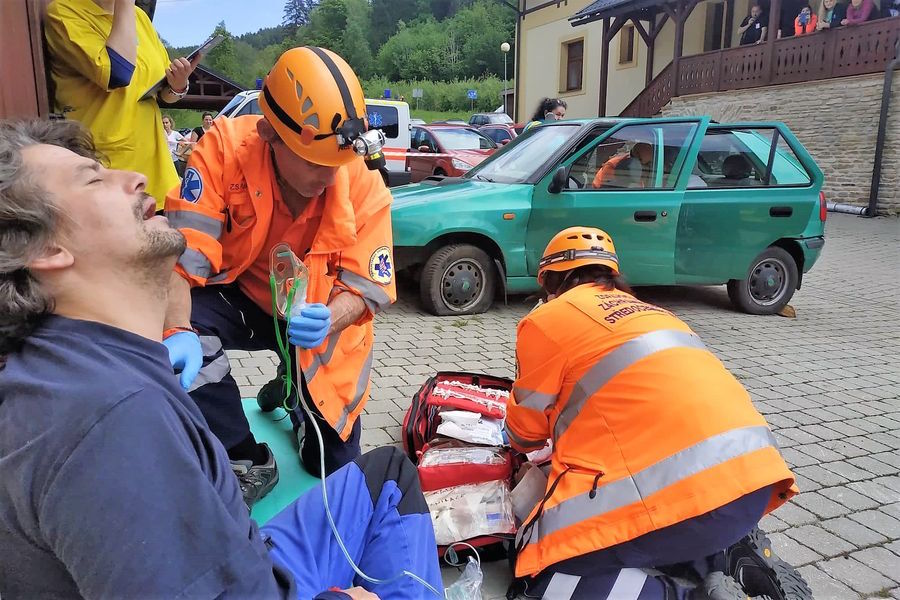Inclusion of laboratory tests in clinical simulation scenarios adds significantly to the realism of simulation since lab results are typically available in clinical practice. As sepsis and septic shock with subsequent multi-organ failure are the leading causes of death in adult intensive care units (ICUs), most healthcare simulation programs should consider medical simulation scenarios that educate and train on the topic. Today, Dr. Kim Baily PhD, MSN, RN, CNE, continues her multi-part series on “Understanding Physiology: The Force Behind Healthcare Simulation – A Guide for Sim Techs” with a deeper dive into understanding Sepsis Labs. Part 5: Sepsis went into sharing what Sepsis is and why its important to medical simulation. Note: The full series is linked below this article!
Sepsis and septic shock with subsequent multi-organ failure are the leading causes of death in adult intensive care units (ICUs). In sepsis, lab results are part of the initial diagnosis and treatment plan. This article provides information about sepsis labs for simulation team members whose background is predominantly technical in nature.
In 2016, the Third International Consensus Definitions Task Force (Sepsis-3) defined sepsis as “life-threatening organ dysfunction due to a dysregulated host response to infection.” Previous treatment “bundles” for sepsis were based on 3 hour and 6 hour treatment bundles. However in 2018, based on new research, a new initial sepsis bundle was identified based on a 1 hour treatment regimen:
- Measure lactate level. Re-measure if the initial level is more than 2 mmol/L.
- Obtain blood cultures prior to the administration of antibiotics.
- Administer broad-spectrum antibiotics.
- Begin rapid administration of 30 mL/kg crystalloid for hypotension or lactate of at least 4 mmol/L.
- Apply vasopressors if the patient is hypotensive during or after fluid administration to maintain mean arterial pressure of at least 65 mmHg.
“Time zero” or “time of presentation” is defined as the time of triage in the emergency department or, if presenting from another care venue, from the earliest chart annotation consistent with all elements of sepsis (formerly severe sepsis) or septic shock ascertained through chart review. (Levy MM, Evans LE, Rhodes A: The Surviving Sepsis Campaign Bundle: 2018 Update. Crit Care Med. 2018;46(6):997–1000).
Laboratory and clinical features that may suggest an underlying etiology of sepsis are as follows:
Blood Culture and Gram Stains: Cultures grow the bacteria that may be in a sample taken from the site of suspected infection, so they can be precisely identified and their susceptibility to various antibiotics determined. Gram stains are used to detect the presence and identify the general type of bacteria. A Gram stain may be done relatively quickly but is not definitive—it provides only presumptive results. The presence of bacteroides fragilis suggests a colonic or pelvic source, whereas Klebsiella species or enterococci suggest a gallbladder or urinary tract source.
- Organism identification is not included in the diagnostic criteria for sepsis because the culprit organism goes unidentified in up to half of patients who present with sepsis, and a positive culture result is not required to make a decision regarding treatment with empiric antibiotics.
- If urosepsis is suspected, obtain a urine Gram stain, urinalysis, and urine culture. A systematic review found that in adult ICU patients, catheter-associated urinary tract infection was associated with significantly higher mortality and a longer stay.
- Other specific cultures may be taken such as sputum (pneumonia), wound cultures, cerebrospinal fluid (meningitis) or tube samples such as central line tips.
Complete Blood Count (CBC): Evaluates red and white blood cells and platelets. However, a CBC count is usually not specific.
- Leukocytosis (WBC count >12,000/µL) with a left shift (greater than 10% immature forms) is also a nonspecific diagnostic finding and can be seen in noninfectious conditions.
- Leukopenia (WBC count < 4000/µL)
- Anemia, and thrombocytopenia may be observed in sepsis.
- ICU patients are at a greater risk of colonization by MRSA, vancomycin-resistant enterococci (VRE), and carbapenem-resistant Enterobacteriaceae (CRE). It is critical to de-escalate or change the empiric antibiotic regimen once the organism susceptibilities are available.
Procalcitonin Levels (PCT): PCT is an acute-phase reactant that is elevated in severe bacterial infections. In most clinical assays, the reference range of PCT is below detectable. Measurement of PCT and C-reactive protein (CRP) at onset and on the fourth day of treatment can predict survival of patients with ventilator-associated pneumonia. A decrease in either one of these marker values predicts survival. A study from van Nieuwkoop et al examined the use of PCT levels in predicting bacteremia in a group of 581 patients, 136 of whom had bacteremia; PCT levels successfully identified 94-99% of the patients with bacteremia.
C-reactive protein (CRP): C-reactive protein (CRP) is a protein made by the liver. CRP levels in the blood increase when there is a condition causing inflammation somewhere in the body due to acute conditions. A CRP level of more than two standard deviations above the reference value is considered significant.
Lactate: When the oxygen level is low, the body switches energy production from carbohydrates from a pathway using oxygen to an anaerobic pathway resulting in the production of lactic acid. Sepsis and other conditions such as heart failure, a severe infection (sepsis), or shock —lower the flow of blood and oxygen throughout the body.Increased levels can indicate organ dysfunction. Hyperlactatemia (serum lactate >2 mmol/L) can result from organ hypoperfusion in the presence or absence of hypotension and indicates a poor prognosis in sepsis patients.. A serum lactate level of 4 mmol/L or more (especially arterial lactate) indicates septic shock.
Hyperglycemia: Plasma glucose level >140 mg/dL or 7.7 mmol/L in the absence of diabetes.
Blood Gases: Indicates Arterial Hypoxemia: PaO 2/FiO 2 ratio < 300 mm Hg and acid-base imbalance.
Acute Oliguria: Urine output < 0.5 mL/kg/hour for at least 2 hours despite adequate fluid resuscitation.
Creatinine : Increase >0.5 mg/dL or 44.2 mmol/L
Coagulation Abnormalities: INR >1.5 or PTT >60 seconds
Thrombocytopenia: Platelet count < 100,000/µL
Hyperbilirubinemia: Plasma total bilirubin >4 mg/dL or 70 mmol/L.
Electrolytes and Liver Function tests (E/LFT): Monitors organ status, electrolyte balance, Eg, hyponatremia, hyperkalemia.
Other tests may be done to help evaluate a patient’s health status or to rule out other conditions, such as troponin to detect a heart attack.
Standby for New Markers:
Osteoprotegerin (OPG): Patients with sepsis have higher OPG concentrations than patients with noninfectious sepsis. In addition higher OPG concentrations at admission in the ICU have a higher mortality rate (Kemperman H, Schrijver IT, Roest M, Kesecioglu J, van Solinge WW, de Lange DW. (2019). Osteoprotegerin is Higher in Sepsis Than in Noninfectious SIRS and Predicts 30-Day Mortality of SIRS Patients in the Intensive Care. J Appl Lab Med. 2019 Jan;3(4):631-642.
Microvesicle-Associated Inducible Nitric Oxide Synthase (MV-A iNOS): Plasma iNOS may act as an early presymptomatic warning signal for the onset of sepsis and could possibly used as an early presymptomatic warning signal for the onset of sepsis. Webber R.J., Sweet, R. M., Webber, D. S. (2018) Inducible Nitric Oxide Synthase in Circulating Microvesicles: Discovery, Evolution, and Evidence as a Novel Biomarker and the Probable Causative Agent for Sepsis. Doi. 10.1373/jalm.2018.026377
Sequential [Sepsis-related] Organ Failure Assessment Score”, or SOFA score
This new grading tool for defining organ dysfunction allocates points according to pathological change in six different organ systems. If the score increases by at least two points and an infection is identified, a diagnosis of sepsis is appropriate. If hypotension is also present (< 65 mmHg only achievable with vasopressors), and the serum lactate levels are more than 2 mmol/L, the patient is said to be in “septic shock”. A quick screening tool qSOFA (“quickSOFA”) for early recognition of sepsis in emergency departments, peripheral wards and rest homes is available. The qSOFA is based on three criteria:
- altered mental status
- respiratory rate of more than 22 breaths/minute
- systolic blood pressure of less than 100 mmHg.
When two of these three qSOFA criteria are present, sepsis should be suspected and full SOFA assessment should be completed by an experienced intensive care specialist.
The SOFA and qSOFA are both good tools to use as a basis for simulations where sepsis identification is the focus but only if appropriate lab results form part of the simulation.
Further Reading: “Recent advances in understanding and managing sepsis“: The last two to three years provided several “big steps” regarding our understanding and management of sepsis. The increasing insight into pathomechanisms of post-infectious defense led to some new models of host response. Besides hyper-, hypo-, and anti-inflammation as the traditional approaches to sepsis pathophysiology, tolerance and resilience were described as natural ways that organisms react to microbes. In parallel, huge data analyses confirmed these research insights with a new way to define sepsis and septic shock (called “Sepsis-3”), which led to discussions within the scientific community. In addition to these advances in understanding and defining the disease, follow-up protocols of the initial “sepsis bundles” from the Surviving Sepsis Campaign were created; some of them were part of quality management studies by clinicians, and some were in the form of mandatory procedures. As a result, new “bundles” were initiated with the goal of enabling standardized management of sepsis and septic shock, especially in the very early phase.
Physiology: The Force Behind Clinical Simulation Series
- Part 1: Blood Pressure
- Part 2: Heart & Respiratory Rate
- Part 3: Pulse Oximetry
- Part 4: Diabetes
- Part 4B: Hypoglycemia & Excel Template for Simulated EHR
- Part 4C: Insulin
- Part 5: Sepsis
- Part 6A: Hypovolemia (Intro)
- Part 6B: Hypovolemia (Treatment & Simulation Tips)
- Part 7A: IV Fluids & Bags
- Part 7B: IV Pumps & Site Access
- Part 7C: PCA for Pain
- Part 8: ABGs
- Part 9: Sepsis Labs
Today’s article was guest authored by Kim Baily PhD, MSN, RN, CNE. (Image Credit: Harvard Blog).
Have a story to share with the global healthcare simulation community? Submit your simulation news and resources here!








